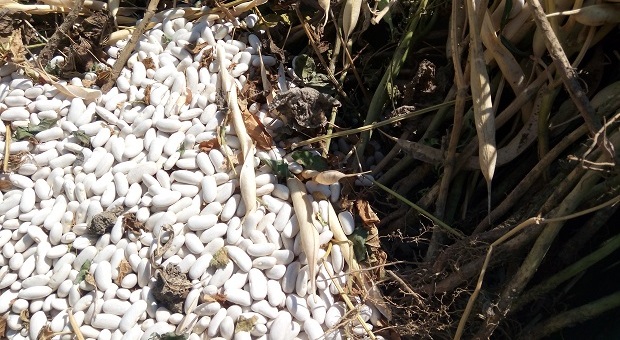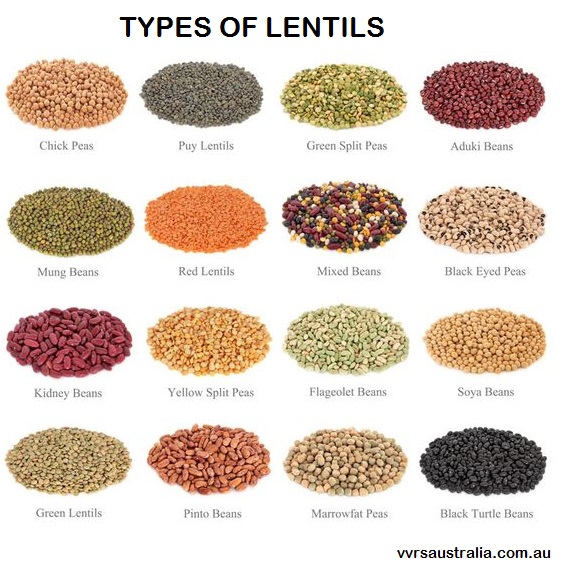As homesteaders, and preppers, we’re always looking for things that are versatile, easy to store and carry, and cheap.
Well, there’s one food that meets all of these criteria and then some: beans. They have a ton of health and survival benefits and are easy to grow and dry.
To Bean or Not to Bean?
Why you should grow or stockpile beans for survival? There are at least four reasons to include beans in your stash.
High Protein
You can grow a beautiful garden and have a ton of veggies and fruits stored, but you likely won’t have much high-quality meat if the end of the world as we know it (TEOTWAWKI) happens.
You can always hunt for it if it’s safe or even possible, but it’s good to have a substitute on hand. Beans have more than enough protein to get you through; 14-16 grams per cup.
One concern though; unlike meat, beans aren’t a complete protein; they lack a few essential amino acids. Pair them with brown rice, oatmeal, nuts or other plant-based proteins and you’ll round it out. In fact, beans and rice is a great carb/protein/fiber combination packed with vitamins and minerals that will feed a ton of people for practically nothing.
Packed with Fiber
Foods high in soluble fiber are beneficial for several reasons that are beneficial for us, especially in a survival situation. Fiber keeps your digestive tract clean, which helps prevent all sorts of illnesses from constipation to colon cancer.
Soluble fiber attaches to cholesterol particles and carry them out of your body, so it naturally lowers cholesterol (goodbye statins that won’t be available if SHTF) and helps prevent heart disease.
Fiber helps you stay fuller longer because it takes longer to digest. Because of this, beans have a low glycemic index, which means that they’re good for diabetics. This could be critical in a survival situation when insulin may not be available. Bonus: if you’re trying to lose weight, feeling full longer helps keep you from overeating.
That’s always a good thing!
Packed with Nutrients and Antioxidants
Beans have a ton of minerals including folate, copper, magnesium, phosphorous, manganese, potassium and zinc. All of these are considered minerals that most people don’t eat enough of, so beans can help round out your diet now and keep you healthy when SHTF.
Beans contain antioxidants, specifically phytosterols and isoflavones, that protect your body from all sorts of illnesses, including different types of cancer, premature aging, and cardiovascular disease.
Beans are Versatile
You can do a kazillion things with beans. You can make baked beans, ham beans, bean soup, bean dip, refried beans, beans for salad; the list goes on. It would be hard to get tired of beans, especially if you have a variety of them.
OK already – beans are good for you, but how do you turn those beans in your garden into those nice dried beans found in the grocery isle that will keep forever? You’re going to be surprised how easy it is.
What Kind of Beans Should you Grow?
Honestly, I personally don’t grow beans because the yield doesn’t merit the effort right now. For instance, you’ll have to grow at least 25 pinto bean plants to yield 1 lb. of beans, and that’s assuming maximum yield. It may take more than 100 plants to yield that.
To put it in perspective, you’d need about a 10-foot row to yield 1 pound. Of course, if you’re in a survival situation and live on a large lot of land (which I don’t have at the moment), then you may want to plant them. Right now, I’d rather use that space to grow veggies I can preserve and just buy my beans.
But if you do decide to grow beans, here you go: Good dry beans include pintos, great northerns, cranberries, limas, kidneys, garbanzos and navys.
Dry beans grow best in warm, dry climates and need good draining soil to keep from molding before they germinate. You may want to start your beans inside because you can’t put them outside until the threat of frost has passed. Also, you want them to mature in the fall because they won’t drop pods if the temperature is above 80 degrees. F.
Grow them in full sun and keep the soil around them loose, well-drained, and well fertilized with your compost. Depending on the bean, they’ll take from 70-120 to reach harvest. In warm, dry climates, the beans will likely dry themselves right on the plant; when the leaves have turned brown and the pods are crunchy, try the beans. They’re ready if you can’t bite them.
You want to get them in before the frost or fall rains even if they’re not dry yet; hang them in the barn or cellar or somewhere else where it’s dry until they’re ready to store. You could also spread them out on a flat screen in the sunshine or another warm place. Pods will split open when they’re completely dry.
You’ll have to remove them from the shells (thus the name “shell beans”) then remove the thresh from them, then store them in an airtight container.
Beans grow great next to bush beans, cucumbers, corn, potatoes, rosemary, strawberries and celery. Don’t plant them with onions, kohlrabi, or beets. Also, don’t plant them close to fennel or leeks.
The good thing about storing (or growing) beans now is that if you need them, they’re versatile. You can sprout them to make great, protein- and nutrient-rich salad ingredients. You can also use them to feed your livestock – check out my article on 14 Cheap Ways to Feed Your Chickens.
The plant scraps make good scratch for your chickens, too.
Some Beans Make Good Flours
If it comes down to it, beans can make a great, protein-rich flour. Garbanzo flour is popular today with organic bakers, especially for people who are gluten-intolerant.
The downside to this is that beans are tough to grind into flour – you’ll need a home mill because, unlike herbs, you can’t grind them in your blender or coffee mill. Again, it will take a ton (not literally) of beans to make even a pound of flour, so you may just want to buy it.
Beans belong in your stockpile, in large quantities if you’re prepping for a long-term survival event. When cooking them, remember that they contain a mild toxin that causes gastrointestinal issues such as gas and bloating. Kidney beans contain a more extreme toxin and eating raw or undercooked kidney beans can make you extremely ill, and can even kill you.
Read our article How to Rehydrate And Prepare Your Preserved Food to avoid the mistake some people are making when cooking dried beans.
If you want to grow them, you’re not alone – many people enjoy growing beans. Be aware though that if you’re going to do it, plant plenty of them because the yield is low.
Beans really are the ideal survival food. They’re nutritious, versatile, cheap, lightweight, and easy to store. Plus, they keep for a long time.
If you’ve grown dry beans, please tell us about what types of beans you grew, what problems, if any, you had, and what your yield was in the comments section below.
This article has been written by Theresa Crouse for Survivopedia.












Taxdn2poverty | June 15, 2016
|
I grow several different types of beans, all vines, no bushes. Rattlesnake pole beans, Kentucky Wonder, Blue Lake, etc. It is hot down here in south Texas now and I grow the beans over a curving trellis towards the sun. Underneath the beans all kinds of other veggies are grown. The bean canopy provides shade for the squash, cucumbers or whatever. This method has worked very good for me. At best Summer time gardening is always difficult with the insect pressure, dry weather, high temperatures, and no the least of having to work in such high humidity. But beans are good producers even in this environment. And they vine quickly on the trellis which provides the shade for the ‘beneath’ crop. thanks
WolfBrother | June 17, 2016
|
You wrote:
Beans grow great next to bush beans, cucumbers, corn, potatoes, rosemary, strawberries and celery. Don’t plant them with onions, kohlrabi, or beets. Also, don’t
However nothing followed Also, don’t
OK – I’ll bite – also don’t what? 😉